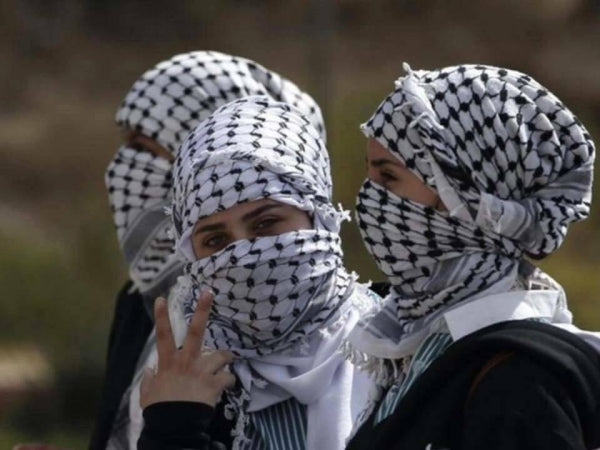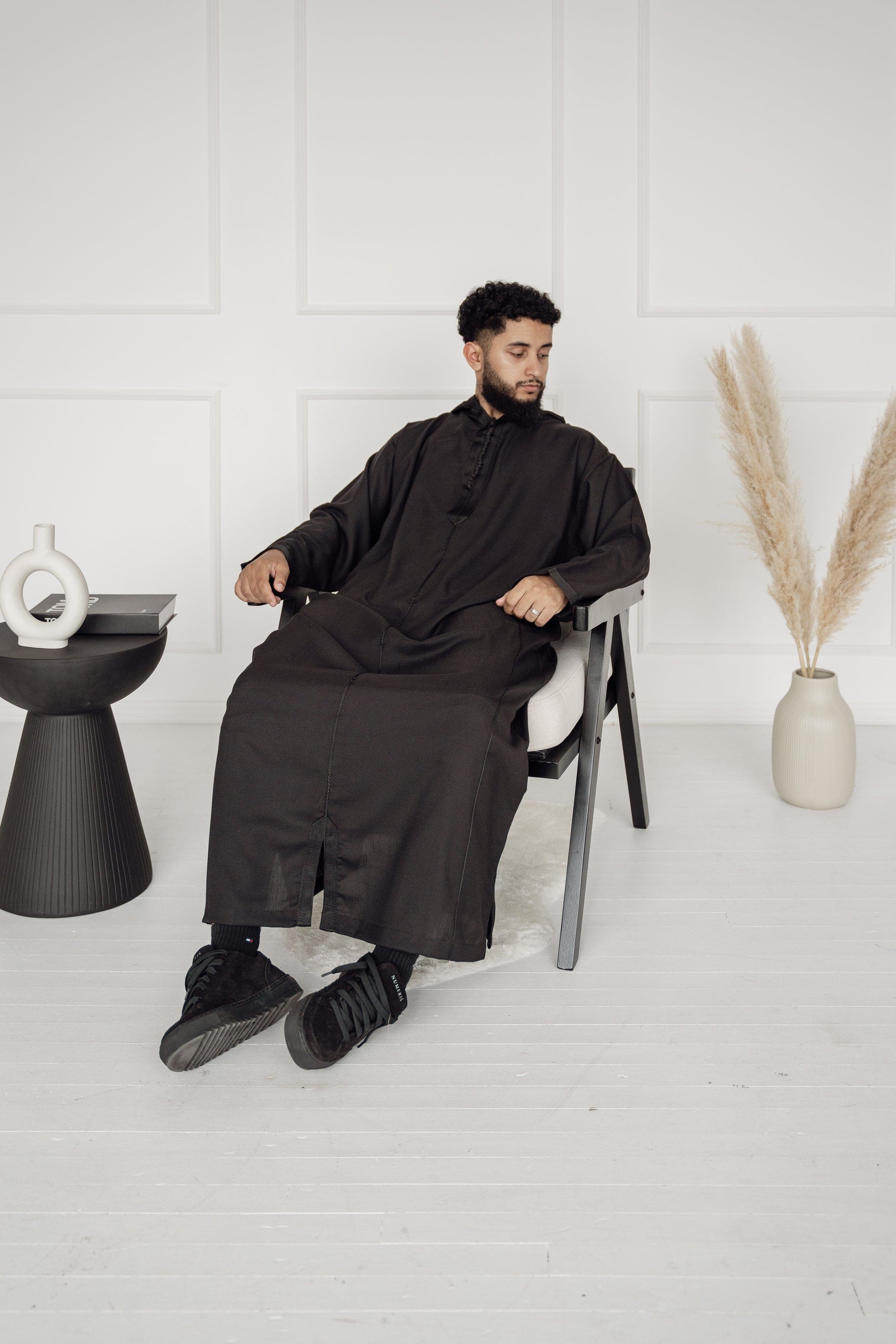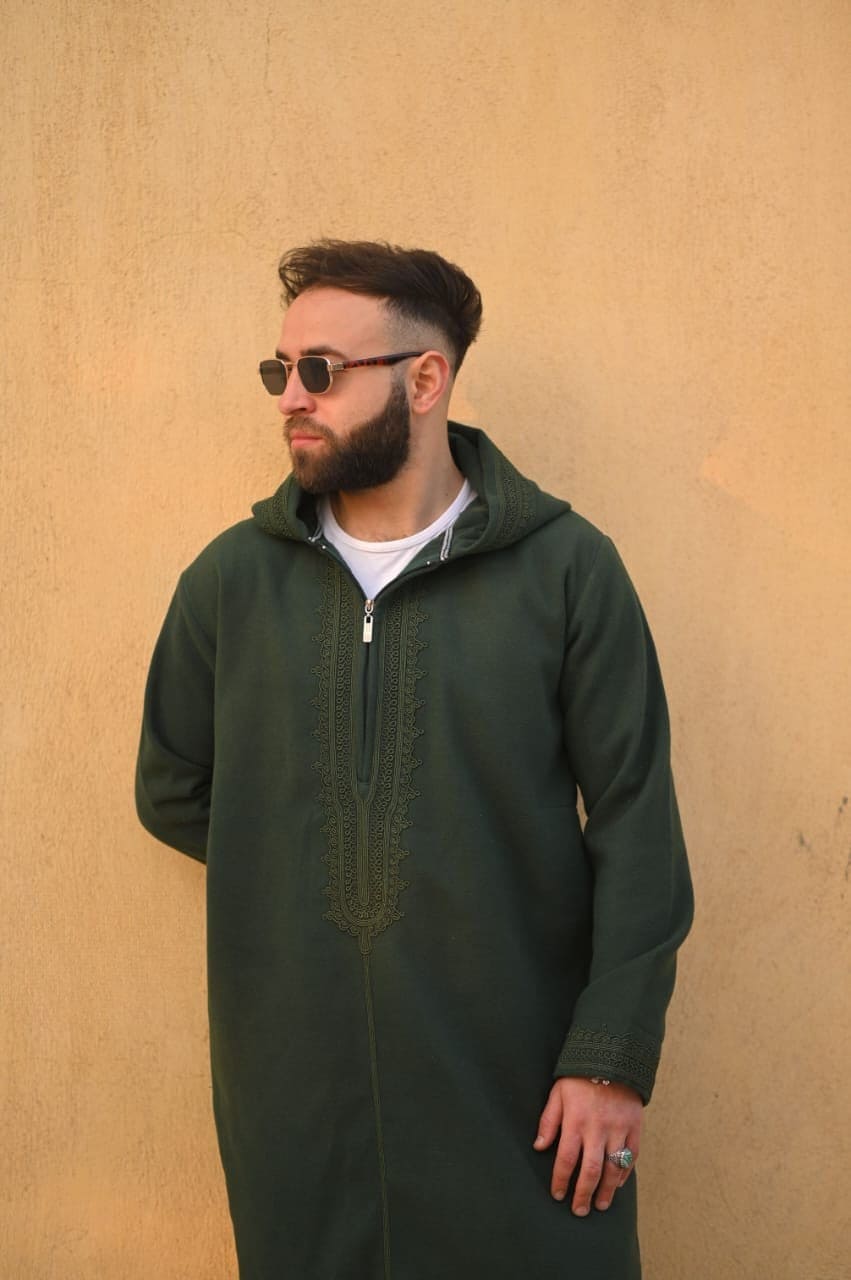The black and white Palestinian keffiyeh is one of the most recognizable symbols in the world today. From the streets of Gaza to protests in London, New York, and Berlin, this distinctive checkered scarf has transcended its geographic origins to become a powerful emblem of Palestinian identity, resistance, and the global fight against oppression. But how did a simple piece of practical clothing transform into an icon that carries the weight of an entire people's struggle? This is the story of the keffiyeh.
Ancient Origins: A Practical Necessity Becomes Cultural Identity
The keffiyeh (also known as kufiya, hatta, or shemagh) has deep roots stretching back centuries in the arid landscapes of the Middle East. Traditionally crafted from cotton, it was first worn by nomadic Bedouin tribes and Palestinian farmers (fellahin) as essential protection against the scorching desert sun, wind, and sand.
During the Ottoman Empire, the keffiyeh signaled that the wearer was rural, distinguishing farmers and Bedouins from the urban classes who wore the fez (tarboush), a deep red felt hat popularized by Ottoman ruler Mahmud II. This was purely a marker of social class. Nobody could have predicted that within a generation, this humble farmer's headscarf would unite an entire nation.
1936: The Birth of a Symbol of National Resistance
Everything changed during the Great Arab Revolt of 1936 to 1939. As Palestinians rose up against British colonial rule and accelerating Zionist settlement, the keffiyeh underwent a dramatic transformation. Palestinian rebels used it to conceal their identities during operations, and it was the traditional dress of rural fighters.
In a pivotal moment, the leadership of the revolt ordered that urban Palestinians replace their traditional fez hats with the keffiyeh. The move was intended to create unity across class lines and to make it impossible for British authorities to distinguish rebels from civilians. When everyone wore the keffiyeh, everyone became the resistance. The peasant's scarf became the banner of liberation.
This strategic adoption transformed the keffiyeh from a marker of rural poverty into a symbol of collective national struggle. It was no longer about class. It was about survival, defiance, and the refusal to be erased.
Yasser Arafat: Making the Keffiyeh an International Icon
The keffiyeh's role as a Palestinian national symbol solidified in the 1960s with the rise of the Palestinian resistance movement and its adoption by Yasser Arafat, chairman of the Palestine Liberation Organization (PLO). Arafat made the keffiyeh inseparable from his image and, by extension, from Palestinian liberation itself.
Arafat had a signature way of wearing his keffiyeh. He draped it over his right shoulder only, arranging it in the rough shape of a triangle to resemble the outlines of historic Palestine. This wasn't accidental. It was deliberate political communication. Every photograph, every television appearance reinforced the message: Palestine exists, Palestinians exist, and we will not disappear.
He famously declared: "The keffiyeh is… the peasant, the farmer, the fighter, the resistance." Through Arafat, the keffiyeh became the flag Palestinians could wear when their actual flag was banned.
Women and the Keffiyeh: Leila Khaled's Revolutionary Impact
While the keffiyeh was traditionally associated with Arab masculinity and worn by men, images of Leila Khaled, a prominent member of the Popular Front for the Liberation of Palestine (PFLP), wearing the keffiyeh in the style of a hijab or wrapped around her neck began circulating in the media in the 1970s.
Leila Khaled gained international attention in 1969 when she participated in the hijacking of TWA Flight 840. Her image, a young woman in a keffiyeh holding a rifle, became one of the most recognized symbols of Palestinian resistance worldwide. Her adoption of what had been considered male attire challenged gender norms within the resistance movement itself.
"That's when we start to see women wearing the black and white keffiyeh, specifically Palestinian women. So it wasn't just a male headdress anymore. By the 1960s, it became something worn by Palestinian women as well around their neck," explained Palestinian dress historian Wafa Ghnaim. The keffiyeh became a unifying symbol that transcended gender, just as it had transcended class decades earlier.
The First Intifada: When the Flag Was Banned, the Keffiyeh Became the Flag
During the First Intifada (1987 to 1993), when Israeli authorities banned the Palestinian flag in the occupied territories, the keffiyeh filled that void. It became the flag Palestinians could wear: a defiant assertion of existence and identity under military occupation.
Men, women, and children wrapped themselves in it as an act of everyday resistance. With the flag banned by the occupation for almost 30 years, the keffiyeh, "to which so much rich symbolism and history was attached, served as an everyday, portable, visual expression of Palestinian identity."
There was no need for words. The pattern itself spoke volumes: We are here. We exist. We resist.
The Symbolism Woven Into Every Thread
The patterns on the Palestinian keffiyeh symbolize various themes: Olive leaves represent strength, resilience, and perseverance. The fishnet pattern represents the connection between Palestinian fishers and the Mediterranean Sea. The bold lines represent trade routes going through Palestine, including the Silk Road.
Olive trees hold great cultural significance for Palestinians, playing a vital role in the Palestinian economy. Even today, approximately 100,000 families in the Palestinian territories rely on olive oil and products as a main source of income. The olive tree, which lives an average of 300 to 600 years, is a symbol of Palestinian resilience and their deep attachment to the land.
The fishnet pattern, which comprises the larger part of the keffiyeh design, symbolizes abundance and grace. To many Palestinians, the sea also means freedom, especially to those living in the West Bank who have no access to the sea due to restricted movement.
Every element of the keffiyeh tells the story of Palestine: its connection to the land, the sea, its ancient role as a crossroads of civilizations, and the endurance of its people.
Global Solidarity: The Keffiyeh Goes Worldwide
In Europe and North America, keffiyehs are often worn by non-Palestinians as a political expression of solidarity with the Palestinian cause. The keffiyeh transcended its Palestinian origins to become a symbol embraced by international activists and solidarity movements representing the broader fight against colonialism and oppression.
From anti-war protests in the 1960s and 70s to present-day demonstrations for Palestinian rights, the keffiyeh has become a universal banner of resistance. It appears at Black Lives Matter rallies, indigenous rights marches, and climate justice protests. The pattern has become shorthand for standing against all forms of injustice.
Its presence at global movements proves that symbols of liberation can speak across borders, cultures, and struggles. The keffiyeh has become what Arafat always intended: a flag that the entire world can recognize and rally behind.
Cultural Appropriation vs. Solidarity: A Critical Line
The keffiyeh's global visibility has sparked important conversations about cultural appropriation versus genuine solidarity. When high-end fashion designers like Balenciaga, Louis Vuitton, and Fendi mass-produce the pattern, it risks becoming cultural appropriation, commodifying resistance and profiting from struggle.
Louis Vuitton's attempt to rebrand the keffiyeh as a luxury accessory sold at $705, compared to an authentic version costing around $5, illustrates how capitalism distorts the cultural meaning of such items. The company marketed a $700 scarf heavily influenced by the traditional Palestinian keffiyeh, described as a "timeless accessory" which "creates an easy-going mood," while omitting the symbolism behind the keffiyeh in its product description.
Louis Vuitton's appropriated keffiyeh is beyond distasteful, not only because of the way they imposed the fashion label's monogram onto it, but also through the choice of colors used which bear a resemblance to the Israeli flag.
British Palestinian hip hop rapper Shadia Mansour denounced cultural appropriation of the keffiyeh, defending it as a symbol of Palestinian solidarity, in her first single, "al Kūfīyah 'Arabīyah" ("The keffiyeh is Arab").
The Difference Matters: When corporations produce keffiyeh patterns divorced from their meaning, stripped of context and sold for profit without supporting Palestinian communities, it becomes cultural theft. But when worn consciously, with knowledge of what it represents and in genuine support of Palestinian liberation, the keffiyeh remains a powerful act of international solidarity.
How to Wear the Keffiyeh with Respect and Purpose
If you choose to wear a keffiyeh, do so with intention:
1. Understand its history. The keffiyeh isn't a trend or a fashion accessory. It represents over a century of Palestinian resistance, displacement, and the ongoing fight for freedom and self-determination.
2. Support Palestinian manufacturers. Buy authentic keffiyehs from Palestinian sources like the Hirbawi factory. Your purchase directly supports Palestinian artisans and preserves a threatened cultural tradition.
3. Speak the truth it represents. Wearing the keffiyeh is a statement. Be prepared to explain its significance and stand up for Palestinian rights. Solidarity isn't passive; it's an action.
4. Center Palestinian voices. The keffiyeh belongs to Palestinians first. Listen to Palestinian perspectives on its meaning and appropriate use.
More Than a Scarf: A Living Symbol of Unbroken Resistance
To wear the keffiyeh today is to carry this entire history forward. It acknowledges the Nakba, the displacement of 750,000 Palestinians in 1948. It recognizes ongoing occupation, settlement expansion, and systematic oppression. It represents connection to stolen land and the demand for its return.
The keffiyeh has survived every attempt to suppress it: British bans, Israeli prohibitions, cultural appropriation, and cheap mass production that nearly destroyed Palestinian manufacturing. It has transformed from village headwear into a global symbol of liberation that refuses to be silenced.
Palestinian dress historian Wafa Ghnaim describes what the keffiyeh means to her personally: "I look at the keffiyeh as a symbol of freedom and history. When I wear a traditional garment, which is what the keffiyeh is, I feel connected, not just with this current moment. I feel connected with my past, with my ancestors, with my great-grandparents, with my father."
The keffiyeh is more than a pattern. It's a political statement. It's a refusal to be erased. It speaks of past dispossession, present struggle, and an uncompromising vision of a free Palestine.
This story continues to unfold, woven into every thread, carried by everyone who understands that symbols matter, especially for oppressed people. The keffiyeh will remain what it has always been: a banner of resistance, a map of historic Palestine worn on the shoulders of those who refuse to forget, and a promise that Palestine will live on.
Wear it with purpose. Wear it with pride. Wear it with the understanding that you carry the hopes of millions who dream of freedom



